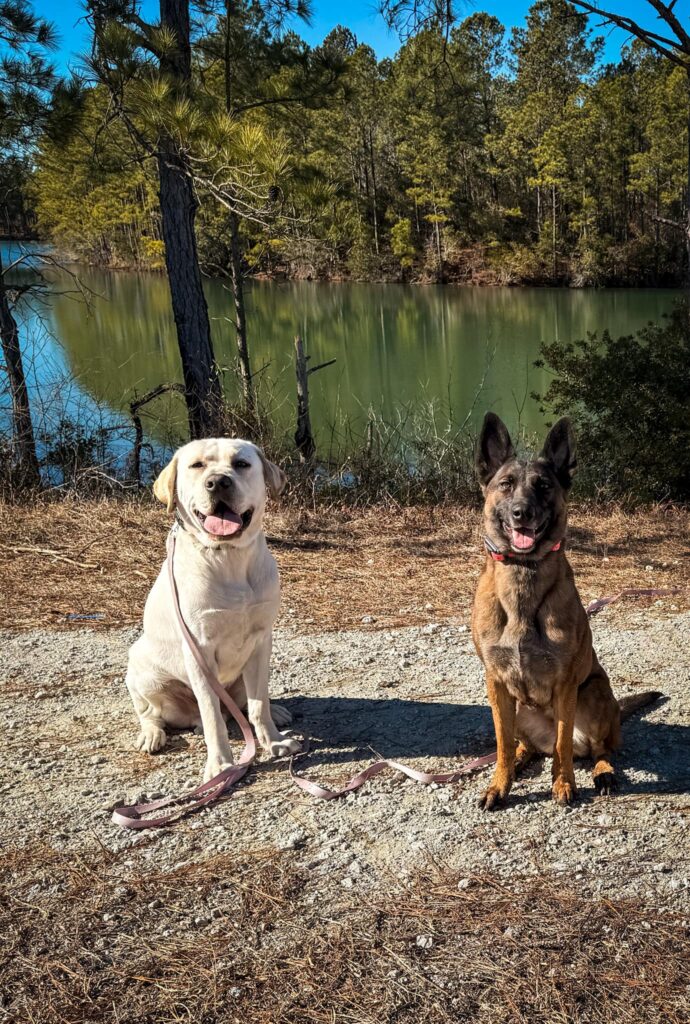Why Are Dogs Scared of the Vet?
Most dogs associate the vet with discomfort—think shots, exams, and strange handling. The unfamiliar environment, odd smells, and other anxious pets don’t help either.
The Impact of Fearful Vet Visits
Fearful vet visits can create stress for both you and your dog, potentially leading to aggressive or avoidant behaviors that make necessary care difficult.
Here are 8 tips to make vet trips easier for you and your dog:
1. Start With Non-Medical Visits
Does your vet allow non-medical visits? If so, take advantage! Bring your dog to the clinic just to hang out, get a treat, and leave. This helps break the “vet=scary” association.
How to Do It:
- Call ahead to schedule a quick, stress-free visit.
- Let your dog sniff around the waiting area.
- Reward them with high-value treats for calm behavior.
2. Teach a Nose or Chin Target
Giving your dog a task, like resting their chin on your lap or placing their nose in your hand, helps redirect their focus during stressful moments.
Training Steps:
- the behavior with a cue like “chin.”
- Gradually increase the duration.
3. Desensitize to Handling
Dogs often dislike being poked and prodded because they’re not used to it. Practice gentle handling at home to help them feel more at ease.
Actions to Take:
- Touch their paws, ears, and mouth daily.
- Pair the experience with treats or toys.
- Keep sessions short and positive.
4. Focus on Obedience Training
Basic obedience commands like “sit,” “stay,” and “place” can work wonders during vet visits. These commands give your dog structure and something to focus on.
Why It Matters:
- A “place” command makes weight checks easier.
- A solid “down stay” reduces chaos in the waiting room.
5. Creating Positive Associations
Bring High-Value Treats or Toys
Pack your dog’s favorite treats or toys for every vet visit. The goal? Create positive associations with the experience.
6. Take It Slow
Training takes time. If your dog seems overwhelmed, slow down and revisit earlier steps. Rushing will only reinforce their fear.
7. When Medication May Help
For highly anxious or reactive dogs, a vet-prescribed medication might take the edge off and make training more effective.
8. Hire professional
If your dog’s fear is too much for you to handle alone, a professional dog trainer can help. Look for someone experienced in desensitization and vet acclimation.
Training your dog to be less scared of the vet isn’t an overnight process, but it’s worth the effort. With patience, consistency, and lots of positive reinforcement, you can turn those stressful vet visits into manageable (or even enjoyable) experiences.
Jenny Klamm, owner of AvidDog Dog Training, has been professionally providing dog training in Wilmington, NC, and surrounding areas since 2017. Passionate about ethical and effective training, she specializes in rehabilitating dogs with aggression, anxiety, and reactivity. Jenny helps dog owners build trusting bonds with their pets through compassionate training. Book your free consultation today! https://aviddogtraining.com/contact-us/.




